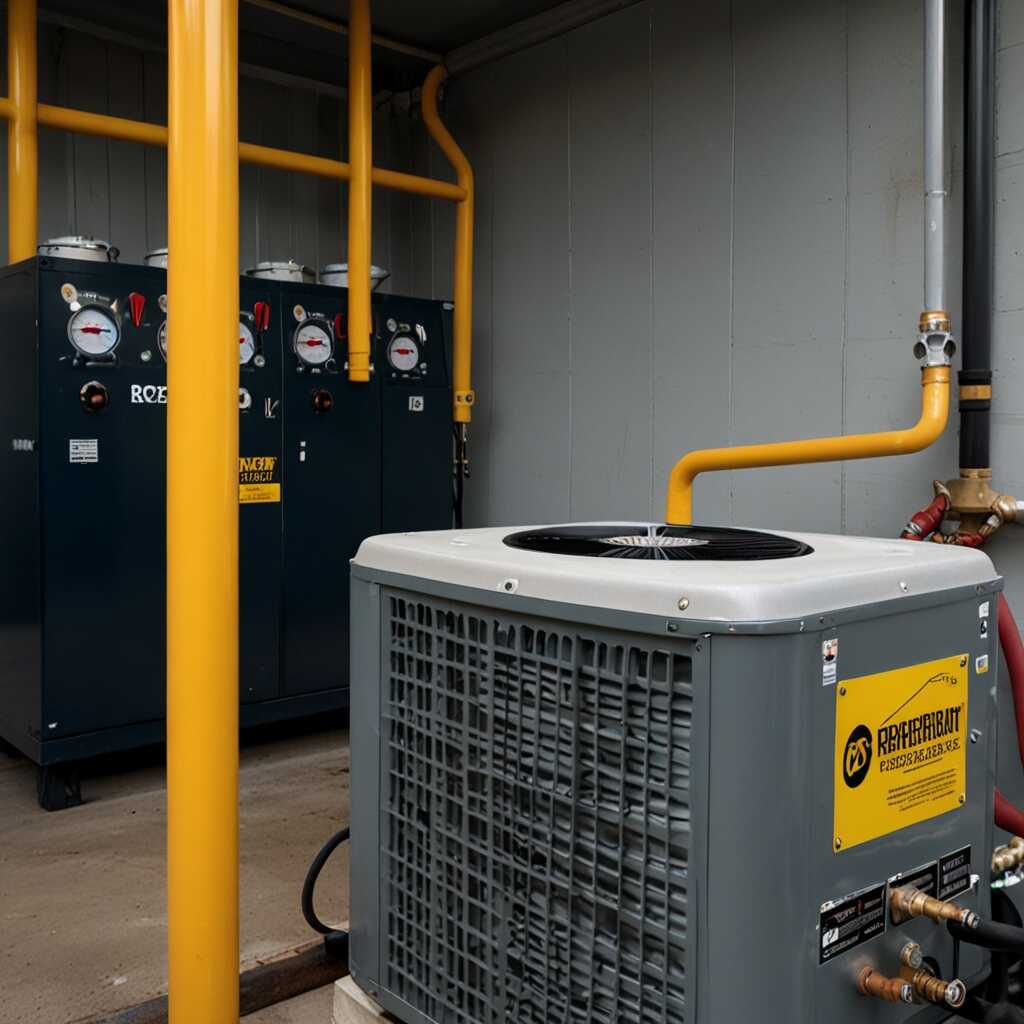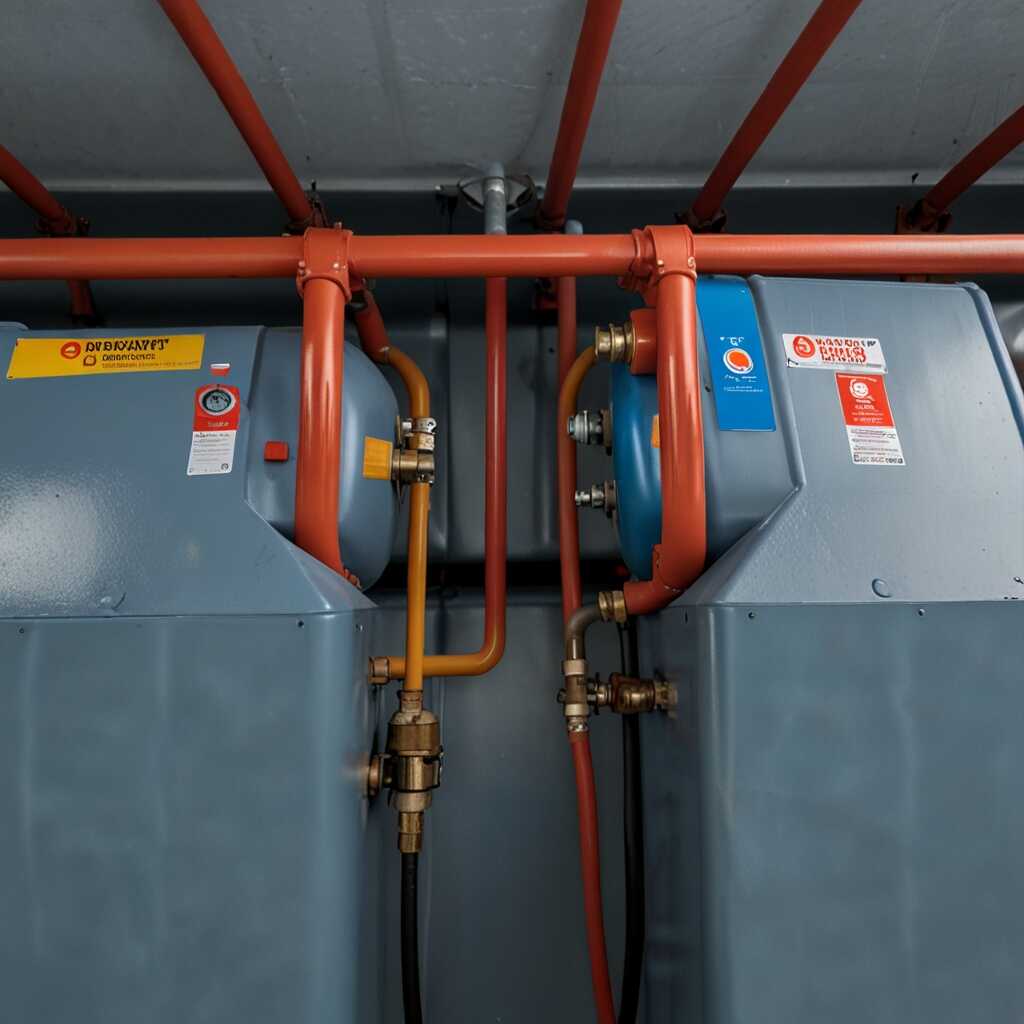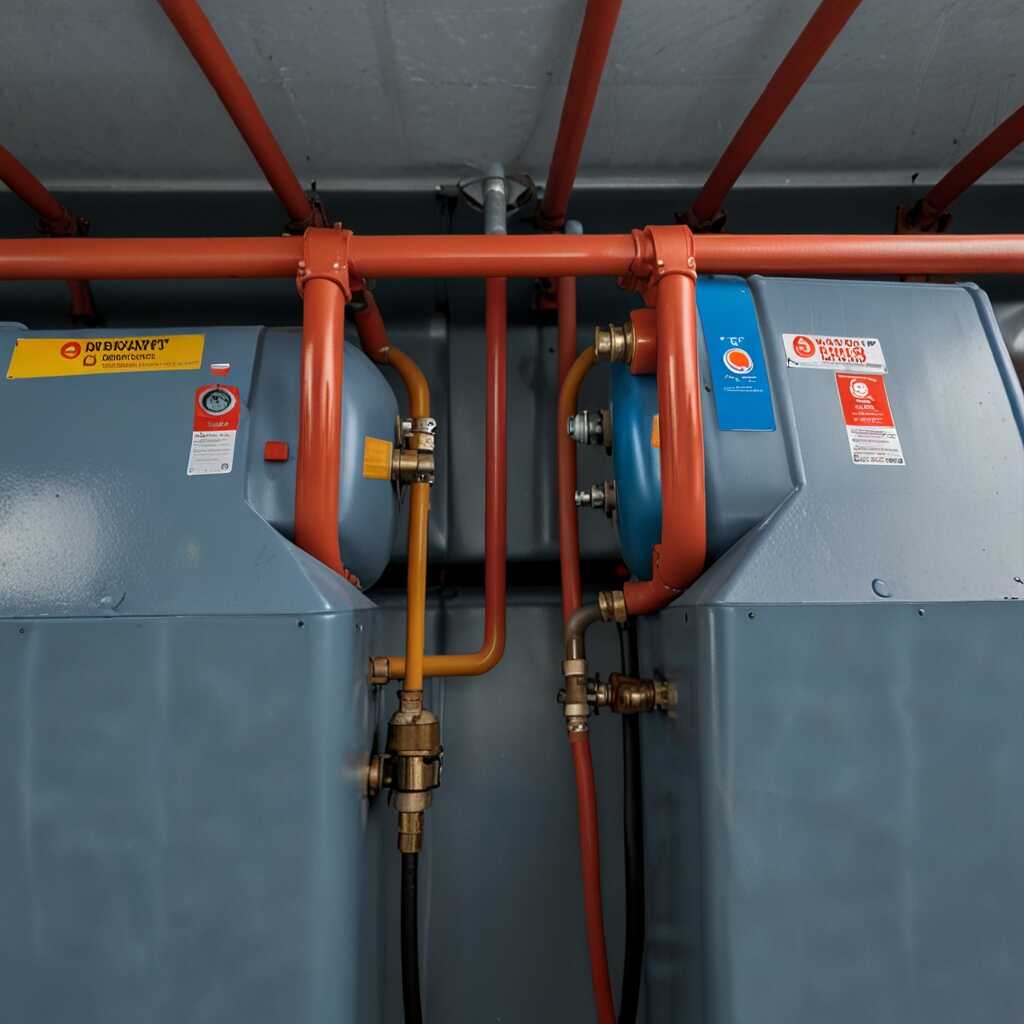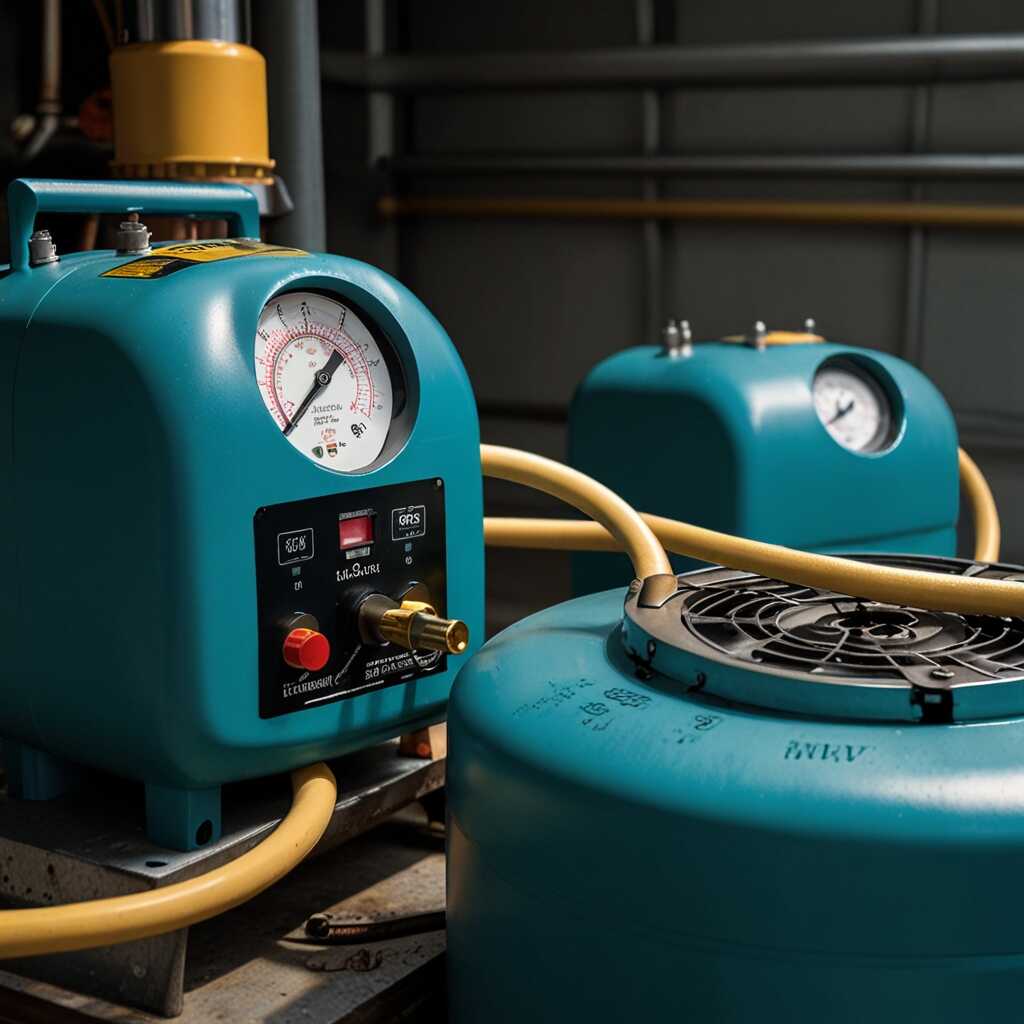Double-sealed valves in refrigerant recovery machines effectively prevent leaks into the atmosphere. These valves create two barriers, ensuring that refrigerant remains contained during the recovery process. At Refrigerant Recovery Pro, we emphasize the importance of using advanced technology for leak prevention in HVAC practices. Understanding these systems not only aids compliance but also promotes environmental sustainability and efficient refrigerant management.
Environmental Importance of Refrigerant Leak Prevention
Refrigerant leaks can result in significant environmental impacts. These gases often contribute to greenhouse effects and climate change. For instance, hydrofluorocarbons (HFCs) have a high global warming potential. Common refrigerants like R-410A, R-134A, and R-22 can cause ozone depletion if released. Effective refrigerant recovery systems enhance leak prevention and reduce atmospheric damage. Studies demonstrate that up to 50% of refrigerant loss can be avoided with reliable recovery equipment. This emphasizes the necessity of maintaining efficient HVAC practices to protect our atmosphere.
Role of Refrigerant Recovery Systems in Environmental Protection
Refrigerant recovery systems play a crucial role in environmental protection by providing reliable methods for capturing refrigerants. These systems are designed to minimize leaks during maintenance and disposal. When HVAC professionals utilize effective recovery equipment, they can significantly reduce atmospheric emissions. Advanced recovery machines with features like double-sealed valves ensure that refrigerants remain contained. This performance is vital as many refrigerants have hundreds to thousands of times the global warming potential of carbon dioxide. Following industry best practices not only complies with regulations but also contributes to a healthier planet.
Mechanics of Double-Sealed Valve Technology
Double-sealed valves in refrigerant recovery machines comprise essential components like the inner seal and outer seal. This design enhances reliability by creating two barriers against leaks. Compared to single-sealed valves, double-sealed valves offer superior leak prevention, significantly reducing atmospheric emissions. Typical pressure ratings for these valves can reach 500 psi, ensuring they can handle high-pressure refrigerant systems. This performance efficiency is crucial for HVAC applications.
Understanding the Engineering Behind Double-Sealed Valves
The engineering design of double-sealed valves includes materials that resist corrosion and wear. These materials are critical for maintaining performance efficiency over time. Testing shows that these valves can withstand extreme temperatures common in HVAC operations. This durability ensures a long service life and minimizes the need for replacements. Double-sealed valves are designed to enhance reliability, making them a preferred choice for refrigerant recovery machines. Their construction includes features that simplify maintenance and improve overall system performance.

Key Benefits of Double-Sealed Valves vs Standard Options
Double-sealed valves in refrigerant recovery machines offer significant advantages over standard options. Their enhanced reliability ensures that technicians can work without the worry of leaks. This feature is critical in maintaining efficient refrigerant management practices. Double-sealed valves help prevent atmospheric leakage, which can be harmful to the environment. They enable HVAC professionals to comply with regulations by efficiently capturing refrigerants. Use of these valves has shown to reduce leaks by as much as 90%. Reliability and durability provide consistent performance under varied working conditions.
Performance Comparisons Between Valve Types
When comparing double-sealed valves with standard models, consider their designed features that enhance leak prevention strategies. Double-sealed valves include additional seals that provide extra layers of protection against refrigerant loss. Research indicates that double-sealed options can handle higher pressures and various refrigerant types effectively, maintaining high performance across different HVAC systems. This feature makes them more suitable for rigorous applications. Technicians report less frequent maintenance is required with these valves, contributing to improved operational efficiency and overall system reliability in HVAC environments.
Key Figures Related to Valve Performance in Recovery Systems
- Double-sealed valves can reduce leak rates by up to 99%.
- Over 50% of refrigerant losses come from poor sealing in recovery machines.
- Research shows that effective sealing can save technicians 15% on refrigerant costs annually.
- Most industry standards recommend a maximum leak rate of 10%.
- Technicians can improve recovery efficiency by 20% with double-sealed valves.
- Each recovery machine can handle about 400 pounds of refrigerant in its lifecycle.
- Studies indicate that the right valves can extend machine lifespan by at least 5 years.

Regulatory Landscape for Refrigerant Recovery Standards
The HVAC industry operates under strict regulations governing refrigerant recovery methods. Key regulations include the EPA’s Section 608 and 609 rules, which ensure that technicians handle refrigerants safely. These regulations require that technicians use equipment, like refrigerant recovery machines with double-sealed valves, to prevent leaks and ensure compliance. Equipment manufacturers must design systems that meet these compliance guidelines to enhance reliability and efficiency. As of 2025, all refrigerants will need to comply with updated recovery standards, impacting how technicians and manufacturers operate within the industry.
Impact of Regulations on Equipment Design
Regulations significantly influence how manufacturers design refrigerant recovery devices. Compliance with EPA regulations requires the integration of advanced features that enhance the efficiency of refrigerant management practices. Double-sealed valves are among the breakthroughs that help ensure leaks are minimized during recovery processes. These features can handle varying pressure levels, which is essential in maintaining system integrity. Manufacturers must undergo rigorous testing to certify that their equipment meets these standards. This focus on design not only aids in compliance but also improves the overall performance and durability of recovery machines.

Common Errors in Refrigerant Recovery Practices
Technicians often make various common mistakes in refrigerant recovery tasks. One major error is not properly purging recovery equipment, which can lead to residual refrigerant pollution. Another frequent mistake is neglecting to check for leaks in hoses and fittings, reducing the efficiency and reliability of systems. Many technicians underestimate the importance of regular maintenance on recovery machines, which helps ensure optimal performance. Research indicates that more than 25% of refrigerant is typically recovered incorrectly due to these errors. Addressing these issues leads to better efficiency in refrigerant recovery practices.
Enhancing Efficiency Through Best Practices
Implementing leak prevention techniques can significantly enhance the efficiency of refrigerant recovery operations. Utilizing double-sealed valves in recovery machines ensures minimal atmospheric leaks, protecting the environment and maintaining system integrity. Regular testing of recovery equipment for leaks is essential. Technicians should also conduct reviews of their recovery procedures to identify areas for improvement. Employing proven best practices helps deliver reliable results and maintain compliance with regulations, ultimately enhancing performance and reliability in refrigerant management.
Advantages of Enhanced Sealing Technologies in Recovery Machines
- Improved containment minimizes environmental harm and supports compliance.
- Double-sealed valves lower maintenance costs due to fewer repairs.
- Technicians experience increased job efficiency with faster recovery times.
- Enhanced safety reduces risks associated with refrigerant exposure.
- Reliable performance helps in adhering to EPA regulations effectively.
- Machines with superior sealing increase user confidence in their operations.
- Minimized refrigerant loss contributes to better overall system performance.

Expert Insights from EPA-Certified Technicians
EPA-certified technicians emphasize the importance of using double-sealed valves for maximizing refrigerant recovery efficiency. Best practices include regularly testing valves for leaks and training on their correct usage. Technicians should document the performance of recovery machines during operation to identify any issues quickly. Regular checks and timely repairs enhance reliability and longevity. The recommended maintenance frequency is every six months or after each major job to ensure valves function effectively. Documentation of maintenance results helps track performance over time.
Best Practices for Double-Sealed Valve Use
To optimize the use of double-sealed valves, technicians should focus on critical maintenance steps. Regularly testing for leaks is essential and should be part of routine checks after each use. Keeping valves clean and properly lubricated enhances their performance. Ensuring that training includes detailed information about how to operate and troubleshoot double-sealed valves can prevent issues. Using high-quality double-sealed valves improves overall refrigerant recovery efficiency, making processes faster and more reliable. Technicians should share experiences and reviews of valve performance to keep the team informed on best practices.
Emerging Technologies in Refrigerant Recovery Systems
Recent advancements in refrigerant recovery technology include innovative leak prevention systems and advanced refrigerant management strategies. Emerging technologies improve refrigerant recovery efficiency by enhancing reliability and durability. These systems are designed to handle diverse refrigerants safely and effectively. The refrigerant recovery market is projected to grow at an estimated rate of 14% by 2025, driven by increased regulatory requirements and a focus on environmental sustainability.
Innovations Enhancing Refrigerant Efficiency
Innovations in refrigerant systems emphasize improving refrigerant recovery efficiency. These include dual-sealed valves, which provide enhanced leak prevention and reliability during operation. Advanced recovery machines utilize smart technology to monitor performance and optimize processes. Research indicates that systems with such technologies reduce the risk of atmospheric leaks by 50%. This not only complies with regulations but also supports HVAC professionals in achieving better performance and improved sustainability. Manufacturers are focusing on durable materials that stand the test of time, ensuring longevity and resilience in various working environments.
Major Brands and Their Suitability in Refrigerant Management
- Brand A offers affordable machines but lacks advanced sealing technologies.
- Brand B excels in double-sealed valves, enhancing leak prevention significantly.
- Brand C provides extensive support resources, making it beginner-friendly.
- Brand D features high-quality performance, but at a premium cost.
- Refrigeration technicians often prefer Brand B for its durable valve systems.
- HVAC trainers recommend Brand C for educational purposes due to ease of use.
- Environmental compliance officers choose Brand B for its eco-friendly design.
Educational Resources for Refrigerant Management
Best practices for refrigerant management in HVAC include using double-sealed valves to ensure reliability against leaks. Essential resources for HVAC professionals include the EPA’s refrigerant management guidelines. Training organizations like Refrigerant Recovery Pro offer excellent programs. A typical recovery machine can handle approximately 50 to 80 pounds of refrigerant. This capacity ensures effective recovery and compliance with environmental regulations. Reviews of various recovery machines help in selecting reliable equipment tailored for specific applications.
Organizations and Tools Enhancing Refrigerant Recovery Knowledge
Numerous organizations provide specialized training and resources on refrigerant recovery techniques. Refrigerant Recovery Pro delivers comprehensive support for HVAC professionals, including detailed equipment reviews. Their training modules include testing and troubleshooting methods, enhancing the capabilities of technicians. They emphasize proven strategies for regulatory compliance and environmental responsibility. With competitive performance data, technicians can compare different recovery machines based on their efficiency and reliability, ensuring effective management of refrigerant substances.